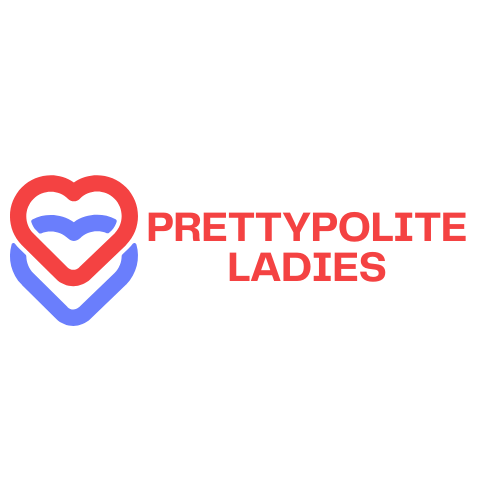The Best Fluffy Pancakes recipe you will fall in love with. Full of tips and tricks to help you make the best pancakes.

Conflict Resolution Model: Unlocking Peaceful Solutions for Every Disagreement
Conflict is as inevitable as a Monday morning, but it doesn’t have to be a disaster. When disagreements arise, having a solid conflict resolution model can transform a potential battlefield into a peaceful negotiation table. Imagine turning heated debates into productive discussions—sounds like magic, right? Well, it’s not. It’s all about understanding the right strategies and techniques that can guide individuals through the stormy seas of conflict.
In today’s fast-paced world, mastering conflict resolution isn’t just a nice-to-have; it’s essential. Whether in the workplace or at home, knowing how to navigate disputes can save relationships and boost productivity. So, let’s dive into the fascinating world of conflict resolution models and discover how they can help turn those fiery arguments into harmonious solutions. After all, who wouldn’t want to be the peacemaker in a world full of drama?
Conflict Resolution Model
Conflict arises in various settings, making it crucial to adopt an effective conflict resolution model. This model serves as a structured approach to navigate disagreements. Several components underlie the conflict resolution process, including communication, negotiation, and mediation.
Communication acts as the foundation for resolving disputes. Individuals express their perspectives and share feelings openly, fostering understanding. Active listening is essential, as it ensures all parties feel heard. Misunderstandings often exacerbate conflicts, so clarity in expression proves vital.
Negotiation follows communication. Parties involved work toward finding common ground. It involves compromise, where each side may need to adjust its position. Successful negotiation relies on a balance between advocating for one’s needs and considering the other’s concerns.
Mediation can formalize this model by introducing a neutral third party. Mediators assist in guiding conversations, facilitating effective communication, and proposing solutions. Their role includes ensuring that discussions remain constructive and focused on resolution.
The model emphasizes various techniques that enhance conflict management. These techniques often include brainstorming alternative solutions, focusing on interests rather than positions, and summarizing key points. By employing these strategies, parties can shift from adversarial mindsets to collaborative problem-solving.
Adopting a conflict resolution model not only aids in resolving immediate disputes but also fosters long-term relationships. Individuals develop skills that promote understanding and cooperation, contributing to a healthy environment. These processes ultimately strengthen connections personally and professionally.
Key Elements Of Conflict Resolution Model

A solid conflict resolution model relies on essential components to effectively address disagreements. Two critical elements in this model are communication and negotiation.
Communication
Effective communication lays the groundwork for conflict resolution. It enables individuals to convey their thoughts and feelings clearly. Active listening is crucial in this process; it ensures that all parties feel acknowledged and respected. In addition, asking open-ended questions fosters deeper understanding. This approach invites participants to express their viewpoints without fear. Ultimately, clear communication helps to dismantle misunderstandings and creates a safe space for dialogue.
Negotiation
Negotiation serves as the next vital step in the conflict resolution process. It focuses on finding common ground between conflicting parties. Each individual enters negotiations with specific needs and concerns, balancing advocacy for themselves with the recognition of others’ positions. Making concessions may prove necessary for reaching a mutually beneficial agreement. Considering creative solutions enhances the negotiation process, allowing participants to explore various possibilities. Successful negotiation not only resolves the immediate issue but also strengthens relationships moving forward.
Types Of Conflict Resolution Models
Various conflict resolution models exist to guide individuals through difficult situations. Each model has specific principles tailored to resolve conflicts effectively.
Interest-Based Relational Approach
The Interest-Based Relational Approach prioritizes relationships and focuses on underlying interests. Participants express their needs and feelings while actively listening to one another. Trust is essential for fostering a supportive environment where discussions can thrive. By identifying common interests, conflicting parties work toward mutual gains instead of entrenched positions. Open communication facilitates a deeper understanding of each individual’s motivations, leading to creative solutions. This model helps maintain positive relationships even after conflicts arise.
The Thomas-Kilmann Model
The Thomas-Kilmann Model outlines five distinct conflict-handling styles: competing, accommodating, avoiding, collaborating, and compromising. Each style represents different responses to conflict and promotes awareness of personal preferences. Competing emphasizes assertiveness, while accommodating highlights cooperation. Avoiding allows parties to sidestep disagreements, which may not always be effective. Collaborating seeks integrative solutions that satisfy all involved, and compromising finds a middle ground. Using this model helps individuals understand their tendencies and adapt their approach based on the situation, enhancing problem-solving effectiveness.
Applications Of Conflict Resolution Model
Conflict resolution models find applications across various domains, significantly improving interactions among individuals. Understanding their usage in different contexts enhances overall effectiveness in resolving disputes.
In the Workplace
Workplaces often encounter conflicts due to diverse opinions, working styles, and competition for resources. Effective conflict resolution models create an environment where employees feel safe expressing concerns. They encourage open communication that leads to successful problem-solving. Engaging negotiation techniques help employees balance differing interests, ensuring that all voices are heard. Implementing these models boosts collaboration and productivity. Companies can achieve long-lasting solutions by fostering trust among team members and encouraging cooperative behaviors.
In Personal Relationships
Personal relationships benefit greatly from conflict resolution models, as they strengthen interpersonal bonds. Couples and family members often face disagreements that can spiral into larger issues. Utilizing structured approaches allows individuals to communicate feelings without escalation. Active listening, empathy, and validation play critical roles in these situations. When conflicts arise, addressing them through effective communication creates a safe space for understanding. Relationships improve through negotiation techniques that prioritize each person’s needs and emotions. Ultimately, these strategies foster a sense of unity and enhance emotional connections between individuals.
Embracing a conflict resolution model can significantly enhance interactions in both personal and professional settings. By prioritizing effective communication and understanding, individuals can transform disagreements into opportunities for growth. The structured approaches outlined not only facilitate immediate conflict resolution but also lay the groundwork for stronger relationships.
As individuals become adept at navigating conflicts through negotiation and mediation, they foster an environment of collaboration and trust. This proactive approach not only addresses current issues but also equips individuals with the skills to handle future disputes with confidence. Ultimately, mastering conflict resolution techniques empowers individuals to create harmonious and productive relationships that thrive in a complex world.
